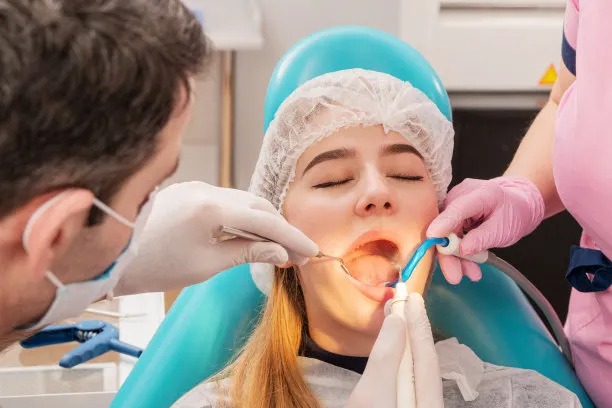The Essential Guide to Understanding Why and How Dentists Extract a Tooth for Optimal Oral Health
Summary: Understanding tooth extraction is crucial for maintaining optimal oral health. This guide delves into the reasons behind extractions, techniques utilized by dentists, post-extraction care, and potential complications. It emphasizes the importance of professional judgment in determining whether tooth extraction is necessary and provides insight into the process, aiming to alleviate patient concerns. Each section is crafted to help readers comprehend the intricacies of this common dental procedure, ensuring they make informed decisions about their oral health.
1. Reasons for Tooth Extraction Explained

Dental extractions are performed for a variety of reasons, often centered around preserving oral health. One primary reason for extraction is severe tooth decay. When a cavity progresses beyond repair and affects the tooths structure, extraction may be the only viable option. Dental professionals assess the extent of decay and may suggest extraction if the tooth cannot be restored effectively.
Another common reason is periodontal disease. This condition affects the gums and supporting bone structure surrounding teeth, leading to loosened or irreparable teeth. If a tooths condition has deteriorated due to gum disease, an extraction may be necessary to prevent further issues and maintain overall oral health.
Impacted teeth, particularly wisdom teeth, present another significant reason for extraction. When these teeth fail to emerge properly, they can cause pain, infection, or damage to surrounding teeth. Dentists often recommend extraction to mitigate these issues and promote a healthier oral environment.
2. Techniques Used in Tooth Extraction
Understanding the techniques utilized during a tooth extraction can help reduce patient anxiety. Dentists typically use two main types of extractions: simple and surgical. A simple extraction is often performed on visible teeth, using local anesthesia to numb the area. The dentist gently loosens the tooth with an instrument called an elevator before removing it with forceps.
Surgical extractions, on the other hand, are more complex and usually entail removing teeth that are broken or below the gum line. This method involves incisions in the gum to access the tooth. Sedation options may be used to ensure the patient remains comfortable throughout the procedure.
In both techniques, dental professionals prioritize patient comfort and safety. The use of modern imaging techniques, such as X-rays, allows dentists to carefully assess the tooths positioning and root structure, facilitating a more efficient extraction process.
3. Post-Extraction Care Recommendations
Post-extraction care is vital for ensuring proper healing and minimizing discomfort. After the procedure, patients are advised to bite gently on a gauze pad to control bleeding. It’s crucial to avoid strenuous activity for the first 24 hours, as this helps reduce the risk of complications such as a dry socket.
Pain management is another significant aspect of post-extraction care. Patients may be prescribed pain relievers or advised to take over-the-counter medications as needed. Ice packs can also be applied externally to reduce swelling in the days following the extraction.
Dietary adjustments are essential during the healing process. Soft foods should be the focus after extraction to avoid irritation to the surgical site. Gradually reintroducing regular foods as healing progresses is advised, allowing the body time to recover fully.
4. Possible Complications to Be Aware Of
While tooth extraction is generally safe, complications can arise. One common issue is dry socket, which occurs when the blood clot at the extraction site dislodges or dissolves before healing is complete. This condition can be quite painful and requires additional treatment to manage discomfort and promote healing.
Infection is another potential complication. Signs of infection include increased pain, swelling, and discoloration at the extraction site. Prompt reporting of these symptoms to a dentist is essential to receive appropriate treatment and prevent further complications.
Lastly, there may be other unforeseen complications such as damage to surrounding teeth or nerves. Dentists take precautions during extraction to minimize risks, but understanding these potential complications can help patients prepare and respond effectively if they occur.
Summary:
Tooth extraction is a significant dental procedure that can be essential for maintaining oral health, especially in cases of decay, disease, or impaction. Understanding the reasons, techniques, post-care, and potential complications associated with tooth extractions empowers patients to make informed decisions about their dental health.
This article is compiled by Vickong Dental and the content is for reference only.


